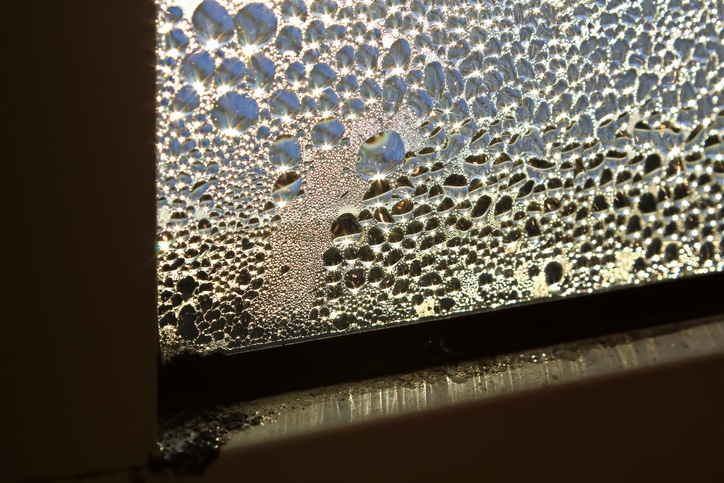
AC condensation may be simply a nagging annoyance, as unwanted water is created by your cooling system. However, the condensation can also affect other aspects of HVAC operation and can even be a signal of more serious dysfunctions elsewhere in the system.
The principle behind condensation is basic: Warm, moist air contacting colder surfaces like ductwork causes water vapor to condense into liquid. It’s not hard to see that, during hot, humid summer conditions, the typical cooling system could potentially create conditions that trigger condensation.
Here are some of the possible signs and symptoms of AC condensation:
- Water visibly dripping out of AC supply vents and forming puddles on the floor.
- Odors emitting from the AC duct due to mildew and mold growth occurring inside wet ductwork.
- Water stains on the ceiling as condensation “sweating” drips off of ductwork routed through the attic.
- A wet, moldy, or mildewed air filter.
- Interior deterioration of ductwork, including rusting and corrosion that causes loss of cooled and heated air.
Some steps you can take to reduce AC condensation and associated damage include:
- Try to reduce the indoor humidity level in rooms where condensation forms at the AC supply air vents. Your HVAC professional will be able to offer solutions to humidity issues.
- Insulate ducts routed through the attic to prevent condensation. Special duct-wrap insulation is made to efficiently retain coolness inside the ducts, as well as seal the metal duct surfaces from contact with hot, humid attic air.
- Have ductwork tested for leakage at joints and other locations. Duct leaks should be sealed to eliminate loss of cold, cooled air that may trigger condensation.
- If mold or mildew has formed due to chronic condensation inside the ductwork, replacing them may be the best option.
- Replace the system air filter as recommended by the filter manufacturer.
For more information about recognizing and eliminating AC condensation issues, contact the HVAC professionals at Jackson & Sons.

